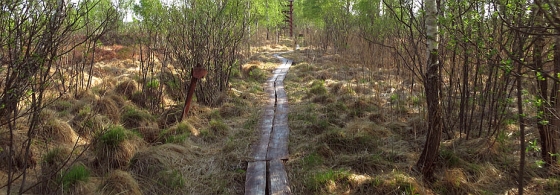CLIMPEAT

Monitoring tree-growth and water table fluctuations;
The objective is assessing the relationship between water table fluctuations, meteorological conditions and tree growth. It is in fact anticipated that the monitoring will allow to:
- model the relation between meteorological conditions and water table fluctuations; and in particular to determine delays between rainfall inputs and water table variations;
- calibrate tree growth against distinct hydrometeorological conditions in order to determine the infuence of seasonal and inter-annual climate variability;
Assessing the mid-term (100 years) vegetation and climatic changes;
The objective is identify and document triggers which have led to changes in peatland vegetation along a hydroclimatic and anthropic gradient. The integration of hydro-meteorological variables, dendrochronological data and the results of the remote sensing analysis will enable determination whether tree colonization and the increase in tree-ring widths are a result of climatic conditions and/or reflective of anthropogenic influences onto the hydrologic status of peatlands.
Assessing the climate of the Holocene (11500 years BP);
The objective is a reconstruction of climatic conditions and changes over the Holocene period and based on (subfossil) peatland vegetation. The focus of this analysis will be on periods of climate warming.
Impacts of current and possible future (2050, 2100) climate changes on peatlands and sequestered carbon;
The objective is to model the impacts of future climatic conditions on carbon and methane sequestration until the end of the 21st century using a follow-up approach of Belyea & Malmer (2004; Global Change Biology).
